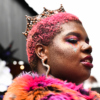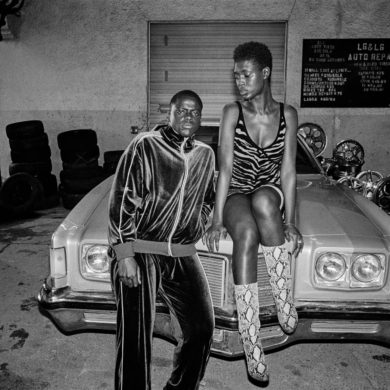When it comes to on-screen representation, the entertainment industry still has a long way to go. This should be a shock to absolutely no one. During the entire Golden Age of American television (1955-1986), only 6% of characters being written were Black, and I know I don’t need to tell you that a good majority of those roles cast POC in unfavorable lighting. Hattie McDaniel became the first Black person to win an Academy Award in 1939 for her role as ‘Mammy’ in “Gone With the Wind,” and they still made her sit in the back of the ballroom the entire evening. At the most recent Oscars ceremony, the sole nomination for a person of any color went to Cynthia Erivo for her role as Harriet Tubman in “Harriet” – a film that I doubt anyone reading this saw. For decades, it seems that for Hollywood, representation simply means presenting Black people and POC at their lowest to invoke white pity. As if the goal is to right historical wrongs rather than to simply provide a valuable entertainment experience – something white audiences seem rather entitled to, as made evident by the array of vapidity that has flooded major networks and big screens for decades.
But, in the wake of the most urgent summer for civil rights in recent history, the push for accountability in every pocket of American consumption has been greatly maximized. From Postmates urging us to order from Black-owned restaurants to whatever those Black squares were supposed to accomplish on Instagram, it seems that we have all collectively decided that more consciousness needs to be given to Black people and all POC across the board. This means that if Hollywood wants to survive, it has to conform. And that doesn’t begin or end with canceling contracts of entertainers and content retroactively deemed as racist or problematic, it starts with inserting actual Black people in everyday, relatable roles.
When my boyfriend and I saw a teen-aged Brandy Norwood – in billboard fashion – on the Netflix homepage two weeks ago, we kind of freaked out. “Moooooeeeesha?!” We were quite folded if I’m being honest. Though I was just 2 years old when the UPN classic aired its finale, Moesha reruns on Nick@nite ruled my adolescence, and it was a very special time, one that I never imagined I’d have the chance to revisit, at least not on a platform as accessible as Netflix. That night, we sat through half of the first season, admiring everything from the dope 90’s fashion and hairstyles to the cheesy dialogue and outlandish subplots.
Three days later, once again scrubbing through Netflix’s vast collection in pursuit of dinnertime entertainment, he goes, “nooooo way! The Gaaame?” in reference to the appearance of the long-running BET/The CW sitcom starring Tia Mowry and Pooch Hall. At that point, I realized the wave Netflix was on because I remembered the introduction of BLM as a genre earlier this summer, a huge turning point for the platform. And frankly, one I was excited to thoroughly explore. But nothing, absolutely nothing, hit me as hard as when I saw both the Mowry twins in their tween glory, rocking patterned berets and overalls on the homepage. “Sister, Sister” found its way into the 21st century and I actually could not contain myself.
I literally gasped. I was in my living room with my little sisters this time and they, unfortunately, didn’t understand what the big deal was. Even though I grew up in an era when Raven Simone dominated the realm of Black visibility for young children, reruns of “Sister, Sister” helped define my younger years. My older sister and I would sit at home for hours, pretending to be Tia and Tamara, respectively as we curbed the neighborhood boys, and making our way in the murky world of elementary school. As I grew older, these versions of Black stories started to dry up and suddenly Zendaya was the only colored person on the Disney Channel. It, of course, hardly mattered to me because I was in my early teens trying to fit in by exclusively watching “American Horror Story” and “The Vampire Diaries.” In hindsight, I feel for my younger siblings as they may not have the chance to see themselves fully – suburban Black children – on screen.
The value of visibility simply cannot be overstated. And right now, Netflix is killing the game. And, of course, investing in more content from established Black creatives such as Ava Duvernay (“13th”, “When They See Us”), Shonda Rhimes, and Kenya Barris. But there is much to say and not enough being said about acquiring established property from their syndicated pasts. Look for no further reference than “The Office” and “Friends.” The former is the most popular show on the platform since the latter got removed from the library. They’re both objectively old but still popular because they not only appeal to the nostalgia of people who were around when they were on the air but they also have the incredible power to draw in a new generation of viewers. Black content from the past 20 years most certainly has the same potential, and I’m glad Netflix has realizes that.
A few days after “Sister, Sister” dropped, Tracee Ellis Ross and her “Girlfriends” made their way to the platform. “The Parkers” are slated to drop on October 1st, followed by “Half & Half” and “One on One” scheduled for release on the 15th of the same month.
Again, visibility is important. It was important 20 years ago and is obviously imperative for our survival now. So, thank you Netflix for a noble first step in the right direction.


